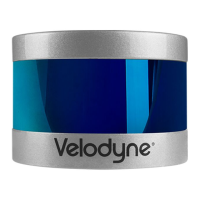Chapter 11 • Troubleshooting
This section provides detail on how to troubleshoot your sensor, how to request technical assistance, how to have the
sensor repaired, and how to replace the fuse in the Interface Box.
11.1 Troubleshooting Process
87
11.1.1 Turned DHCP On, Lost Contact With Sensor
88
11.2 Service and Maintenance
89
11.2.1 Fuse Replacement
89
11.3 Technical Support
90
11.3.1 Purchased through a Distributor
90
11.3.2 Factory Support
90
11.3.3 Support Desk
90
11.4 Return Merchandise Authorization (RMA)
90
11.1 Troubleshooting Process
Problem Resolution
Interface Box LEDs
do not light
Verify:
Power connection and polarity.
Proper voltage should be between 9 V and 18 V, drawing a maximum of 0.9 A dur-
ing normal operation.
Fuse in the Interface Box is okay. See
Fuse Replacement on page 89
if it’s blown.
Rotor doesn’t spin
Verify:
Power connection and polarity.
Proper voltage should be between 9 V and 18 V, drawing a maximum of 0.9 A dur-
ing normal operation.
Fuse in the Interface Box is okay. See
Fuse Replacement on page 89
if it’s blown.
Unit spins but no data
Verify:
Ethernet wiring is functional.
Packet output using another application (e.g. VeloView/Wireshark).
Receiving computer's network settings.
Correct static IP address in your computer's network settings.
No security software is installed which may block Ethernet broadcasts.
Laser ON radio button is selected in Web Interface
Configuration Screen on
page 69
.
Input voltage and current draw are in proper ranges.
Table 11-1 Common Problems and Resolutions
Chapter 11 • Troubleshooting 87

